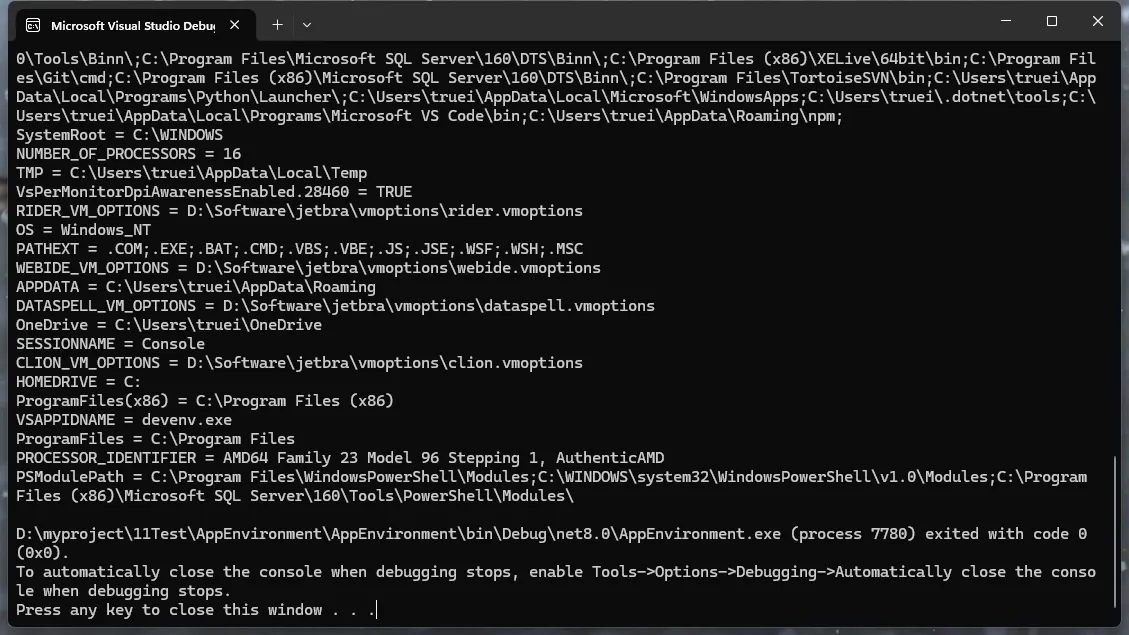项目概述
在本教程中,我们将使用 Windows Forms 开发一个功能完整的截图应用程序。这个应用程序将支持以下核心功能:
- 全屏截图
- 区域选择截图
- 保存截图到指定位置
- 复制截图到剪贴板
项目准备
创建 Windows Forms 应用程序
- 打开 Visual Studio
- 创建新项目 -> Windows Forms 应用程序
- 项目名称:ScreenshotApp
核心代码实现
引言
在现代软件开发中,解耦是构建可维护、可扩展系统的关键。事件驱动架构(Event-Driven Architecture,简称 EDA)为我们提供了一种强大的解耦方案,允许组件之间通过事件进行松散耦合的通信。本文将深入探讨如何在 C# 中利用事件驱动架构实现应用解耦。
事件驱动架构的核心概念
事件驱动架构基于以下关键概念:
- 事件发布者(Publisher):产生事件的组件
- 事件订阅者(Subscriber):对特定事件感兴趣并进行处理的组件
- 事件总线(Event Bus):负责事件的分发和路由
实践示例:电子商务订单系统
我们将通过一个电子商务订单系统的例子,展示事件驱动架构的实际应用。
订单类
C#using System;
using System.Collections.Generic;
using System.Linq;
using System.Text;
using System.Threading.Tasks;
namespace AppEvent
{
public class Order
{
public string Id { get; set; }
public string CustomerId { get; set; }
public decimal TotalAmount { get; set; }
public DateTime CreatedAt { get; set; } = DateTime.UtcNow;
// 可以根据需要添加其他属性,例如订单状态、商品列表等
}
}
快捷键注册概述
快捷键注册是一种在 Windows 应用程序中允许全局热键捕获的技术。通过正确注册快捷键,开发者可以让应用程序在任何情况下都能响应特定按键组合。
实现快捷键注册的关键 API
在 C# 中,我们主要使用 Windows API 中的以下方法来实现快捷键注册:
RegisterHotKey(): 注册全局热键UnregisterHotKey(): 取消注册热键WndProc(): 处理消息循环中的快捷键消息
完整代码示例
C#using System.Runtime.InteropServices;
namespace AppHotKey
{
public partial class Form1 : Form
{
// 定义快捷键消息常量
private const int WM_HOTKEY = 0x0312;
// 导入 Windows API 函数
[DllImport("user32.dll")]
public static extern bool RegisterHotKey(IntPtr hWnd, int id, uint fsModifiers, uint vk);
[DllImport("user32.dll")]
public static extern bool UnregisterHotKey(IntPtr hWnd, int id);
// 快捷键修饰符枚举
[Flags]
public enum KeyModifiers
{
None = 0,
Alt = 1,
Ctrl = 2,
Shift = 4,
Windows = 8
}
// 快捷键 ID
private const int HOTKEY_ID = 1;
public Form1()
{
InitializeComponent();
// 注册快捷键:Ctrl + Shift + A
RegisterHotKey(
this.Handle,
HOTKEY_ID,
(uint)(KeyModifiers.Ctrl | KeyModifiers.Shift),
(uint)Keys.A
);
}
// 重写消息处理方法
protected override void WndProc(ref Message m)
{
// 检查是否为快捷键消息
if (m.Msg == WM_HOTKEY)
{
// 获取快捷键 ID
int id = m.WParam.ToInt32();
if (id == HOTKEY_ID)
{
// 快捷键触发时的处理逻辑
HandleHotkeyTriggered();
}
}
base.WndProc(ref m);
}
// 快捷键触发处理方法
private void HandleHotkeyTriggered()
{
MessageBox.Show("快捷键 Ctrl + Shift + A 被按下!");
// 在这里添加您想要执行的具体操作
}
// 程序关闭时取消注册快捷键
protected override void OnFormClosing(FormClosingEventArgs e)
{
UnregisterHotKey(this.Handle, HOTKEY_ID);
base.OnFormClosing(e);
}
}
}

什么是环境变量?
环境变量是操作系统中存储的动态值,可以被应用程序和系统进程使用。在C#中,我们可以通过多种方式读取、设置和管理环境变量。
读取环境变量
获取系统环境变量
C#using System.Collections;
namespace AppEnvironment
{
internal class Program
{
static void Main(string[] args)
{
// 获取特定的系统环境变量
string systemPath = Environment.GetEnvironmentVariable("PATH");
Console.WriteLine("系统PATH:" + systemPath);
// 获取所有环境变量
foreach (DictionaryEntry env in Environment.GetEnvironmentVariables())
{
Console.WriteLine($"{env.Key} = {env.Value}");
}
}
}
}

Windows 通知是与用户进行交互的重要方式。通过 Microsoft.Toolkit.Uwp.Notifications,我们可以轻松实现丰富的通知功能,包括基本通知、图片通知、交互式通知等。
环境准备
NuGet 包安装
PowerShellInstall-Package Microsoft.Toolkit.Uwp.Notifications
必要的 using 语句
C#using Microsoft.Toolkit.Uwp.Notifications;
using Windows.UI.Notifications;
using Windows.Data.Xml.Dom;
项目中对版本要求,一定是Windows10以上版本。

基础实现
首先,我们创建一个通知辅助类来封装常用的通知功能:
C#public class NotificationHelper
{
/// <summary>
/// 发送基本通知
/// </summary>
/// <param name="title">通知标题</param>
/// <param name="content">通知内容</param>
public static void SendBasicNotification(string title, string content)
{
var builder = new ToastContentBuilder()
.AddText(title)
.AddText(content);
builder.Show();
}
}
通知类型
基本文本通知
C#public static void SendBasicNotification(string title, string content)
{
var builder = new ToastContentBuilder()
.AddText(title)
.AddText(content);
builder.Show();
}
